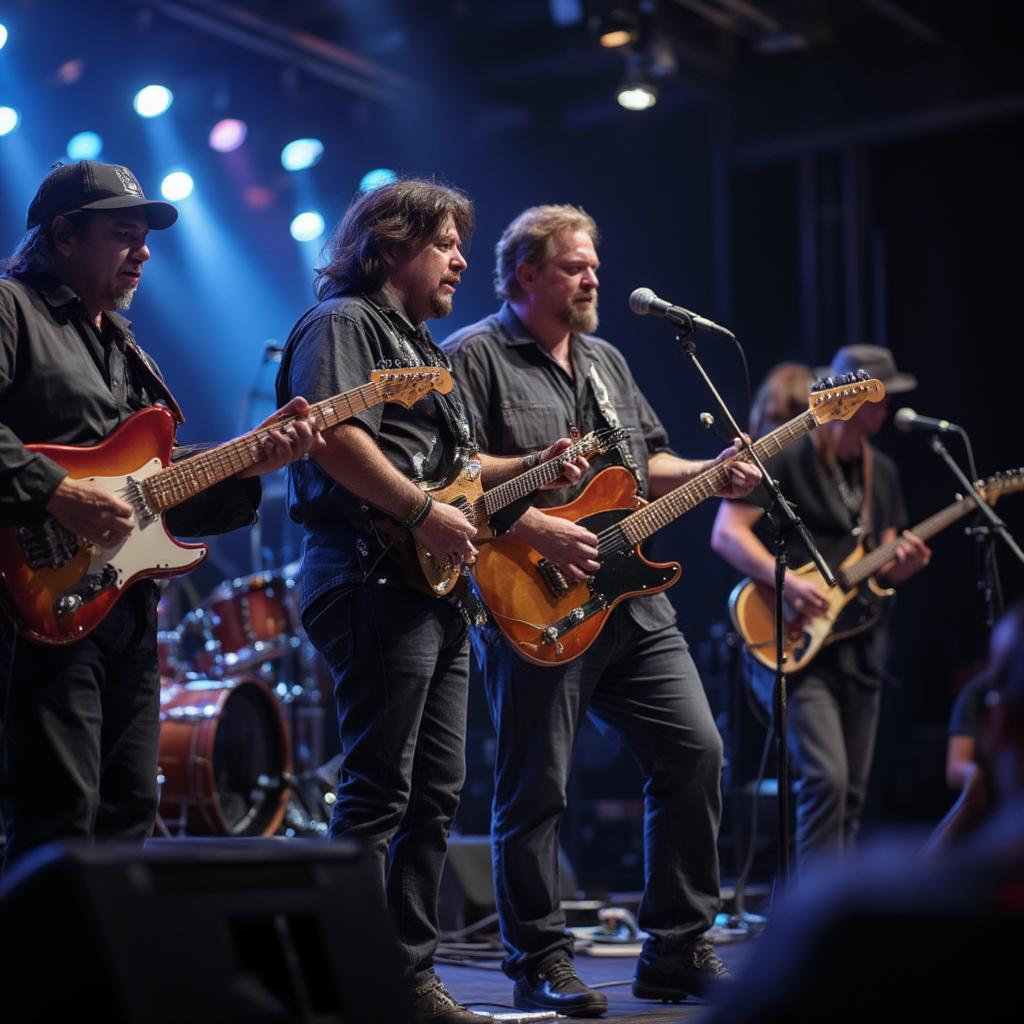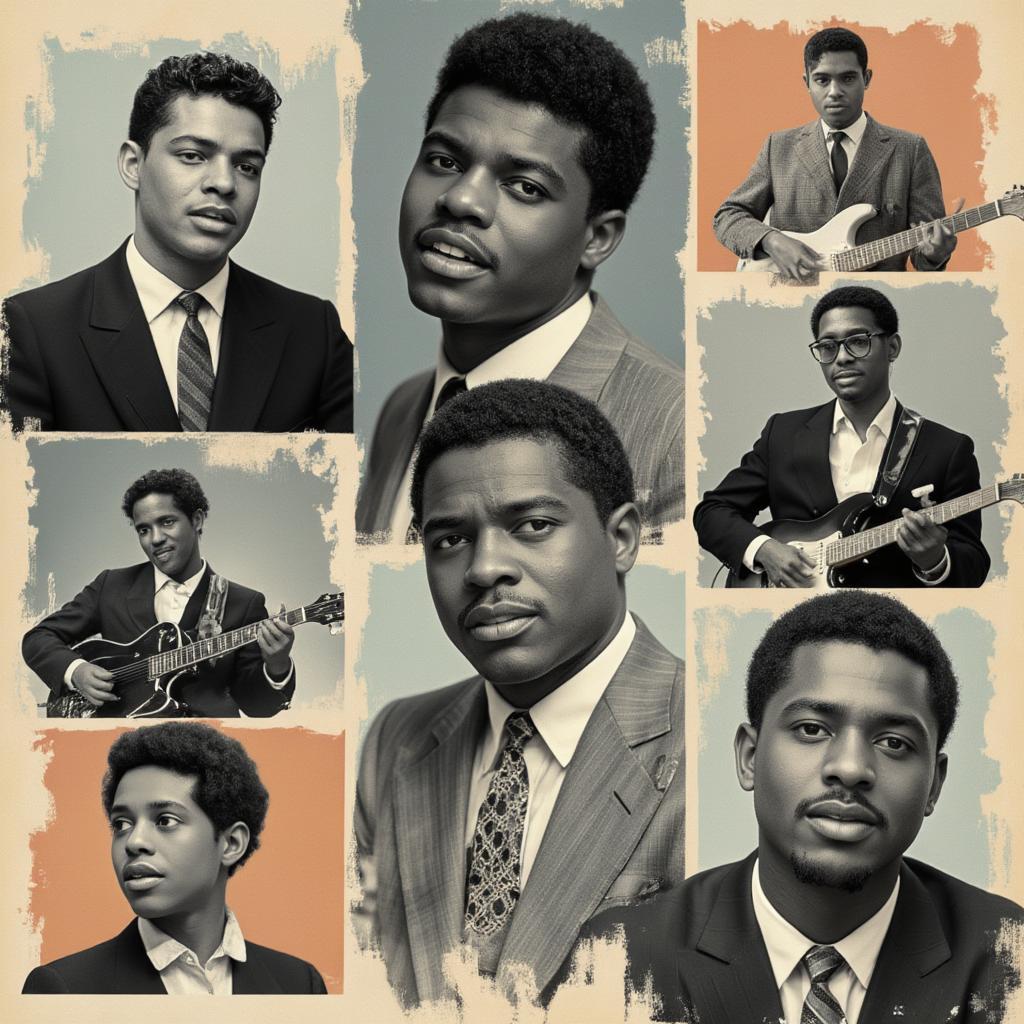Deep Dive into Soul Music Rhythm and Blues Songs

Hey music lovers! Ever felt that raw, unfiltered emotion seeping from a song, hitting you right in the feels? That’s the magic of soul music rhythm and blues, the heart and soul of a genre that has shaped the landscape of modern music. We’re not just talking about any tunes; we’re diving deep into the world of soul music rhythm and blues songs that make you move, groove, and maybe even shed a tear or two. Here, as The Midnight Howler, and the driving force behind Shock Naue, I’m going to break down why this music hits so differently and why it continues to resonate with so many.
What Makes a Song a Soulful Rhythm and Blues Anthem?
So, what exactly defines soul music rhythm and blues songs? It’s not just about a catchy melody or a toe-tapping beat. It’s about authenticity, the raw emotion conveyed by the singer, and the groove that makes you want to move. This genre often features:
- Gospel Roots: Many rhythm and blues songs borrow heavily from gospel music, incorporating powerful vocals and passionate deliveries.
- Call and Response: A technique where a lead vocal is answered by a chorus, adding a layer of dynamism and interaction.
- Emotional Depth: The lyrics often explore themes of love, heartbreak, resilience, and social commentary.
- Instrumental Soul: Think prominent bass lines, punchy horns, and soulful guitar riffs, all working together to create an unforgettable soundscape.
The Evolution of Rhythm and Blues
Let’s take a brief journey through time. The early days of rhythm and blues were heavily influenced by blues and gospel music. Think of artists like Sister Rosetta Tharpe and Louis Jordan – their music was raw, energetic, and full of personality. The genre evolved, finding its way into dance halls and clubs, shaping the landscape of popular music as we know it. From the smooth sounds of r&b classic soul music to the funkier grooves of later decades, rhythm and blues has always been about innovation and reinvention.
The Golden Era: Classic Soul Music
The 1960s and 70s saw the rise of soul as a distinct genre, with artists like Aretha Franklin, Otis Redding, and Sam Cooke becoming iconic figures. Their music wasn’t just catchy; it was moving and deeply personal. These were the voices that sang about the struggle and hope, creating anthems that have stood the test of time. This is where soul music rhythm and blues songs truly shined, establishing the genre as a force in music.
“The soul of rhythm and blues is in its ability to convey the deepest human emotions,” says Dr. Eleanor Vance, a renowned music historian and professor. “It’s a genre that connects with us on a primal level, making it eternally relevant.”
Identifying Key Elements in Soulful R&B Tracks
When you listen to a great R&B track, what exactly are you hearing? Here’s a breakdown of the key components:
- Vocal Prowess: A powerful and expressive vocalist is at the heart of any great R&B song.
- The Groove: Rhythmic complexity is the backbone, combining swing, syncopation, and infectious beats.
- Storytelling: Lyrical content often narrates a story, sharing experiences and emotions.
- Dynamic Range: The shifts in volume and intensity create dramatic and engaging listening experiences.
These elements combined create a sound that is not only musically rich but also deeply emotionally resonant. To understand this genre, one must appreciate the nuances in how the music is put together and why it sounds and feels so good. Just like the sounds we produce here at Shock Naue with our passion, a true rhythm and blues band needs that connection to the music.
The Instrumentation: The Heartbeat of Soul
From the classic 1980 music hits r&b, we saw that instruments became more electric and integrated with synth, but the roots of great soul music lie in the basics:
- Bass Guitar: The foundation, driving the rhythm and providing a deep, resonant groove.
- Drums: Providing the backbeat, with subtle variations that create a dynamic rhythm.
- Guitar: From soulful riffs to bluesy solos, the guitar adds emotional depth to the tracks.
- Horns: Trumpets, saxophones, and trombones provide the punch, the harmony, and the emotional swells.
Why Do Soul Music Rhythm and Blues Songs Resonate?
So, why is it that soul music rhythm and blues songs continue to be so popular? Well, the appeal lies in the honesty and emotional vulnerability of the music.
- Authentic Voices: It’s the realness that draws people in, the feeling that the artists are sharing their true selves through their music.
- Relatable Experiences: The themes of love, loss, struggle, and hope are universal experiences that most people can relate to.
- Timeless Appeal: The classic sound is not just about nostalgia; it’s about a timeless quality that transcends generations.
“The enduring appeal of rhythm and blues is its ability to capture the complexity of human experience,” notes Marcus J. Riley, a music critic and author. “It’s not just about the notes; it’s about the feeling behind them.”
The Influence of Soul and R&B on Modern Music
The impact of rhythm and blues on modern music is undeniable. From pop to hip-hop, the influence can be heard in the melodies, the beats, and the overall sound. Many contemporary artists draw inspiration from the classics, sampling old records or emulating the soulful vocals of their idols. It is in this spirit that we at Shock Naue try to keep the tradition alive while also keeping our unique sound. If you want to hear some modern twists on classic tunes, you can play all r&b music.
Key Artists and Their Contributions
To really get a feel for soul music rhythm and blues songs, here are some names to check out:
- Aretha Franklin: The Queen of Soul, her voice is a force of nature.
- Otis Redding: His raw emotional delivery is unparalleled.
- Ray Charles: A pioneer who blended R&B with other genres.
- Etta James: Her bluesy vocals and powerful delivery are iconic.
- Sam Cooke: Known as the “King of Soul,” he brought a sophistication and gentleness to the genre.
- Stevie Wonder: A musical genius who infused soul with funk, R&B and other styles.
- Al Green: The smooth and soulful voice that defines the 70s era of R&B.
These artists were not only amazing performers; they were innovators, pushing the boundaries of music and leaving a lasting impact. We’ve seen some artists trying to capture the essence of this movement and you can hear some of them in our take on early 90s r&b songs.

How to Find Your Own Soulful Rhythm and Blues Tracks
Ready to dive deeper? Here’s how you can find some great soul music rhythm and blues songs:
- Explore Online Streaming Services: Use platforms like Spotify, Apple Music, or YouTube Music, searching for artists and playlists.
- Check Out Online Communities: Join forums or groups dedicated to soul and R&B where you can find recommendations and talk with fellow fans.
- Listen to Classic Radio: Check for local or online radio stations that play classic soul and R&B.
- Explore Music Blogs and Reviews: Dig into music blogs and publications that specialize in R&B to uncover hidden gems and up-and-coming artists.
By exploring these resources, you’ll open up a whole world of soulful R&B music that you may have never heard before.
Conclusion
Soul music rhythm and blues songs are more than just music; they’re an experience. They’re a journey through the human heart, exploring every emotion that makes us who we are. Whether you’re a lifelong fan or just discovering the genre, there’s something powerful and timeless in these songs that will speak to you on a deep, personal level. From the raw emotion to the rhythmic grooves, the appeal of this genre is undeniable, and it will continue to shape the future of music. So, put on your favorite track, close your eyes, and let the soul take over.
Frequently Asked Questions About Soul Music Rhythm and Blues Songs
1. What is the main difference between Soul and R&B music?
While often used interchangeably, Soul music emphasizes gospel-rooted vocals and emotion, while R&B encompasses a broader range of rhythms and instrumentation. Soul is often a sub-genre of R&B, focusing on raw, emotional delivery.
2. Who are some of the most influential artists in soul and R&B history?
Key figures include Aretha Franklin, Otis Redding, Ray Charles, Etta James, Sam Cooke, Stevie Wonder and Al Green. Their music continues to shape the genre and inspire future generations of artists.
3. What makes a song a classic Soul R&B track?
A classic soul R&B track often has powerful vocals, heartfelt lyrics, a strong rhythmic groove, and distinctive instrumentation, such as bass, horns and piano. These elements combine to create an unforgettable listening experience.
4. What are some common themes in soul R&B music?
Common lyrical themes include love, heartbreak, social struggles, resilience, and hope. These relatable topics resonate with audiences across different eras and backgrounds.
5. How has soul R&B influenced modern music?
The influence is broad and can be heard in various genres, including pop, hip-hop, and rock. Modern artists often sample classic R&B tracks or emulate their soulful vocal styles.
6. Where can I find classic soul and R&B music?
You can find classic tracks on streaming services, online communities, radio stations, and music blogs. Exploring these resources can lead to discovering hidden gems and new artists.
7. What kind of vocal styles are common in Soul and R&B?
Vocal styles range from powerful and raw to smooth and soulful. Singers often use techniques such as improvisation, melisma, and call and response to create dynamic performances.
8. What is the role of the band in soul music?
The band is crucial in soul music, providing the rhythmic foundation and emotional depth with instruments like bass, drums, guitar, horns, and keyboards. Each element works together to create the music’s unique sound.
9. What are some lesser-known facts about the origins of soul music?
Soul music emerged in the 1950s and 60s from a blend of gospel, blues, and early R&B. It often served as an outlet for expression for the Black community, making the music culturally and socially important.




